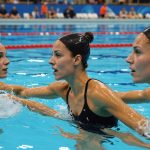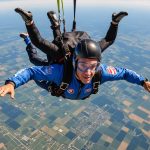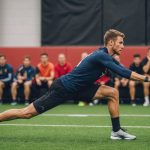Importance of Strength Training for Ice Skating Spins
Strength training is pivotal in enhancing spins for ice skaters by building the necessary power and control. The strength training for ice skating focuses primarily on developing specific muscle groups crucial for effective spinning. These efforts significantly improve the skater’s balance and stability during rotations, two essential components to executing flawless spins.
Key Muscle Groups: The primary muscles engaged in spinning include the core, legs, and lower body. Strong core muscles are fundamental for maintaining tight body positions during spins, while lower body strength ensures smooth transitions and rotations. Quads, hamstrings, and calves play vital roles in generating the required rotational force.
Besides muscle strength, flexibility and balance also play crucial roles. Exercises that improve these aspects can significantly enhance spinning ability by allowing for better control and precision. A strong emphasis on flexibility contributes to achieving graceful and consistent spins, as it allows for greater range of motion and fluidity.
In summary, combining strength training, flexibility, and balance reinforces the foundation for mastering ice skating spins, leading to remarkable improvement in performance and satisfaction on the ice.
Additional reading : Mastering endurance: essential strategies for rowers to dominate long-distance competitions
Targeted Strength Training Exercises
Targeted strength training exercises are crucial for skaters aiming to master spins. These exercises focus on developing the muscles necessary for effective spins and enhancing performance through improved control and power on the ice.
Core Strengthening Techniques
Core strength is vital for executing spins with precision. Engaging in exercises like planks, Russian twists, and medicine ball throws helps build a resilient core. These workouts and regular training improve muscle building for spins, ensuring a stable and efficient rotation. Skaters should integrate these exercises into their routine, aiming for consistency to achieve better spin quality.
Leg and Lower Body Training
The ice skating workout targets key muscles in the lower body, including the quads, hamstrings, and calves. To enhance these areas, exercises such as squats, lunges, and calf raises are essential. These exercises not only build muscle but increase endurance and power, essential for strong spins. Regular practice can lead to improved spinning ability through greater leg strength.
Upper Body Conditioning
The upper body plays a pivotal role in spin balance and arm positioning. Exercises like push-ups, tricep dips, and shoulder presses should be included in a comprehensive training regimen. By building upper body strength, skaters can ensure optimal arm positioning and enhanced balance during spins.
Overcoming Common Challenges in Spin Mastery
Skaters aiming to perfect their spins often encounter various challenges in ice skating spins, such as maintaining balance and achieving consistent rotation. Identifying these spinning difficulties is the first step towards improvement. Improving spin technique hinges on understanding the nuances that impact performance, such as maintaining a tight core and ensuring proper muscle engagement throughout the spin.
Common issues include losing stability or facing hesitation during spins, which may arise from weak core muscles or improper arm positioning. To solve spin issues, skaters can benefit from targeted exercises like planks and shoulder presses. These build essential core and upper body strength necessary for maintaining balance.
Incorporating specific drills, such as practicing half spins or using a balance board, can further develop stability and confidence. Implementing feedback from coaches and using mirrors during practice helps refine technique and identify areas for improvement.
By focusing on these strategies, skaters can overcome the challenges in ice skating spins and enhance their spinning capabilities. Engaging in continuous practice and targeted exercises equips skaters with the necessary strength and precision for mastering spins on the ice.
Visual Demonstrations and Techniques
Visual learning for skaters plays a crucial role in mastering spins, offering a dynamic and engaging way to improve form and technique. Watching spin technique videos can provide skaters with detailed insights into body positioning and movement. Visual aids, such as these, break down complex spins into manageable components, making the learning process more intuitive.
Ice skating training videos serve as excellent resources, showcasing various spins, from basics to advanced techniques. These videos often feature professional skaters demonstrating spins, allowing viewers to observe the correct execution and refinement of each step. Watching these videos, skaters can pause, rewind, and study movements frame by frame, enabling thorough understanding and replication.
In addition to instructional content, using video feedback systems is invaluable. By recording their own practices and comparing them with tutorials, skaters can gain objective assessments of their performance. This visual comparison highlights areas needing improvement and confirms successful techniques, facilitating informed adjustments in their training.
Incorporating spin technique videos and video feedback into their routine encourages continual self-assessment and proactive enhancement of skills. Embracing these technological tools garners an edge in the pursuit of spin mastery on the ice.
Success Stories and Testimonials
Drawing inspiration from ice skater testimonials can significantly boost motivation and refine your approach to mastering spins. Many skaters have shared their training success stories, illustrating the transformative impact of dedicated effort on spin performance. Through targeted strength training, these athletes have achieved remarkable improvements, enhancing both their technique and confidence on the ice.
Consider the tale of Jenna, an amateur skater who struggled with maintaining stability during spins. By committing to a structured training routine, including core strengthening exercises and ice skating workouts, she witnessed a substantial shift. Her consistent practice not only improved her spins but also propelled her overall skating abilities. Jenna’s experiences underscore the importance of perseverance and the role of a considered approach in achieving goals.
Personal anecdotes like Jenna’s provide valuable motivational insights. They offer practical lessons, such as the necessity of integrating flexibility drills and listening to coach feedback, which can lead to noteworthy advancements in spinning capabilities. Engaging with these success stories can inspire skaters to push through challenges and remain steadfast in their pursuit of excellence on the ice.
Sample Training Program
Embarking on a structured ice skating training plan can significantly enhance spin capabilities. A well-rounded strength training schedule should encompass a balanced mix of strength, flexibility, and stamina exercises. This ensures a comprehensive approach to spin improvement.
Weekly Training Framework
-
Monday and Thursday: Begin with core strengthening exercises such as planks and Russian twists to build stability. Transition to leg-focused workouts, incorporating squats and calf raises to boost lower body power.
-
Tuesday and Friday: Focus on upper body conditioning with push-ups and tricep dips, crucial for maintaining arm positioning and balance during spins.
-
Wednesday and Saturday: Dedicate time to flexibility exercises such as yoga or pilates, improving range of motion and fluidity on the ice.
Progress Tracking and Plan Adjustment
Monitoring progress is essential in any structured training for spins. Keep a log of exercise routines and note improvements in spin duration and stability. Regular assessments allow skaters to identify areas needing more focus, ensuring continued progress. Adjust the strength training schedule as needed, accommodating individual needs and goals, to maintain motivation and achieve optimal results.











